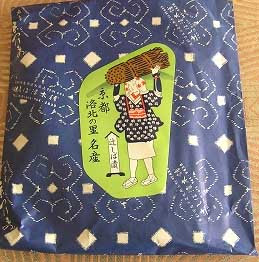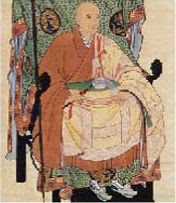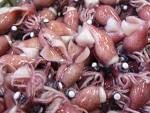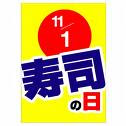::::::::::::::::::::::::::::::::::::::::::::::::::::::::::::::::::::::::::::::::::::::::::::::::::::
Burdock (goboo)
***** Location: Japan
***** Season: See below
***** Category: Plant and Humanity
*****************************
Explanation
edible burdock, comfrey, gobo, goboo 牛蒡
Arctium lappa, Greater Burdock
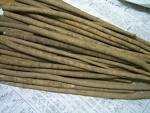
japanische Schwarzwurzel, "grosse Klette"
It has medicinal properties and is used in Chinese medicine (kanpo). Said to help with fatique, prevents catching a cold, provokes urin production and detoxifies.
Japan seems the only place where it is eaten as a normal vegetable.
Before use in Japanese food it has to be soaked in vinegar to remove the bitterness. Its fibers are good for digestion.
kinpira goboo 金平, the name comes from the Strong Boy, Kintaroo 金太郎.
Kintaro, Daruma daki Kintaroo だるま抱き金太郎
Something that gives you strenth, kin hira 金平
planting burdock, goboo maku 牛蒡蒔く(ごぼうまく)
kigo for spring
flower of burdock, goboo no hana 牛蒡の花 (ごぼうのはは)
kigo for summer
planting burdock in autumn, aki no goboo maku
秋の牛蒡蒔く
pulling out burdock, goboo hiku 牛蒡引く (ごぼうひく)
digging for burdock, goboo horu 牛蒡掘る (ごぼうほる)
kigo for autumn
................................................................................
kigo for mid-autumn
Fuji goboo 富士牛蒡(ふじごぼう) "Mount Fuji burdock"
subashiri goboo 、須走牛蒡(すばしりごぼう)
Fuji azami 富士薊 (ふじあざみ) "Mount Fuji thistle"
azami goboo 薊牛蒡(あざみごぼう)
Cirsium purpuratum
The name is burdock, but the plant belongs to the thistle family. The roots are often sold as a speciality of mountain hot springs and around Mount Fuji.
:::::::::::::::::::::::::::::::::::::::::::::::::::::::::::::::::::::::::::::::::::::::::::::::::::
Hiraki goboo 開牛蒡 (ひらきごぼう) "open" burdock
"divining sticks" burdock, sangi goboo 算木牛蒡(さんぎごぼう),
"crushed" burdock tataki goboo 叩牛蒡(たたきごぼう)
The long burdock roots are inscised various times and boiled long as they are. They resemble the divining sticks of temples and shrines. Sometimes the burdock is crushed.
kigo for the New Year
:::::::::::::::::::::::::::::::::::::::::::::::::::::::::::::::::::::::::::::::::::::::::::::::::::

sacred rope like burdock, goboo jime 牛蒡注連( ごぼうじめ)
kigo for the New Year
Shimenawa 注連縄 details about the sacred rope
:::::::::::::::::::::::::::::::::::::::::::::::::::::::::::::::::::::::::::::::::::::::::::::::::::
Yamamori Goboo 山盛りのゴボウ
Eating large portions of burdock
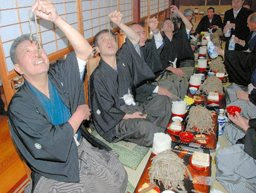
This is an event in the town of Kuninaka in Echizen, Fukui prefecture.
The "Goboo eating group" goboo koo ごぼう講 meets on February 17. The men in official robes eat long stripes of burdock and drink sake to pray for a good harvest and good luck for the coming year.
This dates back to the year 1705 when the poor villagers kept a secret field in the compounds of the local shrine Kuninaka jinja 国中神社 to grow some extra rice they did not have to give a way as tax crop. They offered the rice and burdock to the local deity and partook of it afterwards. Nowadays, 48 families of the village still keep this tradition.
About 30 menfolk of the neighbourhood meet at the home of the one in charge for this year. They have to eat a lot of rice and burdock, 5 go cups of cooked of rice each (gogoo mossoomeshi 五合物相飯). This year 3oo kilograms of burdock were cooked and eaten with the fingers.
. . . CLICK here for Photos of shrine Kuninaka Jinja ! 国中神社
福井県越前市国中町
:::::::::::::::::::::::::::::::::::::::::::::::::::::::::::::::::::::::::::::::::::::::::::::::::::
Dishes with burdock root
kinpira gobo, kinpira gobō, kinpira goboo
きんぴらごぼう
simmered burdock root, braised burdock root
Carrots and burdock are stir-fried with salt and sugar.
. . . CLICK here for Photos !
Chikuzen-Ni with gobo
Fukuoka speciality.
Goboojiru 牛蒡汁 Miso soup with burdock
. . . CLICK here for Photos !
:::::::::::::::::::::::::::::::::::::::::::::::::::::::::::::::::::::::::::::::::::::::::::::::::::::
Horikawa goboo 堀川牛蒡 (ほりかわごぼう)
burdock from Horikawa
One of the Kyoto Vegetables. It has been discovered under the "Horikawa" moat which Toyotomi Hideyoshi had build more than 300 years ago.
It is so big the inside is hollowed out and stuffed with minced meat of chicken or fish before it is braized.
. . . CLICK here for Photos !
:::::::::::::::::::::::::::::::::::::::::::::::::::::::::::::::::::::::::::::::::::::::::::::::::::::
Yahata-maki やはたまき (八幡巻き) goboo burdock roll
Kyoto speciality.
With goboo from Yahata town.
*****************************
Worldwide use
*****************************
Things found on the way

Tenugui, small towels with vegetable design
Kyooyasai 京野菜 vegetables from Kyoto
. . . CLICK here for Photos ! Kyoyasai
Kyoosai 京菜 Kyoto Vegetables
Gemüse aus Kyoto, Kyoto-Gemüse
Kyo yasai vegetables are not of origin in Kyoto, but include vegetables that have been introduced from other areas. The vegetables have adapted well to the soil and the water of Kyoto. The seeds and the cultivation methods have improved over the generations and these vegetables are now very important to the cuisine of the town. There are about 50 different kinds available, usually named after its place of origin. They are all of strong appetizing colors and mostly eaten fresh, often used in the temple kitchen and for the tea ceremony cooking. Nowadays, they are even advertised on the internet.
Many are cultivated since the Heian period and a lot grow in temple gardens. Some count 34 varieties as the traditional "Kyoto Vegetables of the temple cuisine".
Farmers wifes bring the vegetables to their customers in hand carts on certain days of the week.
Kyoto vegetables and pickles from these vegetables are also used in "obanzai" おばんざい Kyoto home cooking.
. . . CLICK here for Photos !
. Kyoto Obanzai Dishes
daikon (だいこん) 大根 radish
from temple 聖護院 (Shoogooin)・辛味・青味・時無・桃山・茎・佐波賀 Sabaka in Maizuru ,郡大根

Temple Shogo-In
This giant radish is also used for the dish called furofuki daikon "Gesimmerter Rettich".
ebiimo, ebi-imo 海老芋 sweet potatoes in the form of a shrimp and are prepared in famous dishes, like imoboo いもぼう【芋棒】potato sticks.
. . . CLICK here for Photos !
kabu カブ turnips 佐波賀・松ヶ崎浮菜・聖護院 Shogoin・大内・舞鶴 , 東寺蕪 Toji kabu
Tempel Toji, Kyoto
kabocha, see
Shishigatani kabocha 鹿ヶ谷かぼちゃ pumpkin from Shishigatani, Kyoto
Kamo nasu, Kamonasu 賀茂茄子・京山 (eggplant) from the Kamigamo-area are as large as 300 to 400 grams per piece and are a summer vegetable. They are almost round. They are eaten boiled or fried with oil. With miso paste as dengaku.
They are the most well known of the Kyoto Vegetables. They are also used for pickles called "shibazuke".
. . . CLICK here for Photos !
... moginasu もぎなす they are a little smaller and harvested in early summer.
Kintoki ninjin 金時人参 Kintoki carrots Kyoo ninjin 京人参 "Kyoto carrots"
Kujoo negi, kujonegi 九条葱 leek from Kujoo
Near the tmeple Tooji.
Long green onion. It tastes best in the winter time. It is rather sticky, but this gives it a sweeter taste. The contrast of the white stem and green leaves is well liked and the leaves are also eaten.
These leek dates back to 711, according to the Kyoto Prefecture's Gardening Almanac of 1909.
. . . CLICK here for Photos !
kuwai クワイ arrowhead bulb
Sagittaria trifolia
kyoo takenoko 京竹の子/ 京筍 bamboo shoots from Kyoto
They are a typical spring vegetable. They are grown in special groves of Rakusai (western Kyoto) and different from the wild varieties. They are sweet and soft and can be served raw when freshly picked, only with a vinegar-miso-sauce.
kyuuri, Shoogooin kyuuri 聖護院胡瓜(キュウリ) cucumbers
. . . CLICK here for Photos !
. Manganji toogarashi 万願寺唐辛子 hot green peppers from temple Mangan-Ji .
mibuna 壬生菜(ミブナ)leavy vegetables from the Mibu area
畑菜・鶯菜・花菜
. . . CLICK here for Photos !
Mibu Temple Kyoto
mizuna (Japanese cabbage) called mibuna, grown near Mibu-dera (Mibu temple) a temple renowned for kyogen (comic drama flourished from the middle of the 14th century). The clear spring water helped with the irrigation of the fields to grow this plant. It has feathery leaves and the stalk is white and thin. The color contrast is one of its charms, so is its crunchy bite. It is used for soups, pickles, fried or in a salad.
Made with steamed and cut mibuna :
. tonsho mochi 屯所餅 "garrison mochi" .
myooga 京茗荷(ミョウガ)Japanese ginger
sasage 柊野ささげ(ササゲ) cowpea; black-eyed pea; southern pea
Vigna sinensis. Sasage-Bohne
seri 京芹(セリ) Japanese parsley; dropwort
Shishigatani nankin (pumpkin) see:
Shishigatani kabocha 鹿ヶ谷かぼちゃ pumpkin from Shishigatani, Kyoto
Shogoin kabura, Shoogooin kabu 聖護院かぶ, a kind of turnip started with seeds from Omi brought to Kyoto during the Edo period. The thinly sliced turnips, salted and pickled with kombu (kelp) are called senmaizuke 千枚付け, which is the first of its kind to be eaten with no other food.
. . . CLICK here for Photos !
sugukina 酸茎菜(スグキナ)"sour turnip leaves"
Brassica rapa var. neosuguki
They are used for the pickle called "sugukizuke".
suguki are eaten as ochazuke in Kyoto.
. . . CLICK here for Photos !
toogarashi トウガラシ chilli peppers
伏見・田中・山科・万願寺・鷹ヶ峰
udo, kyoo udo 京独活(ウド)京うど
mountain plant which produces fat, white, edible stalks.
. . . CLICK here for Photos !
Udo from Edo
uri, Katsura uri 桂瓜(ウリ)gourd, melon
Cucumis. melo var. conomon
Katsura uri is used as the original ingredient for narazuke (pickles).
. . . CLICK here for Photos !
The temple cooks and chefs of Kyoto restaurants use these fresh vegetables for traditional dishes as well as some new experiments with Westernized dishes.
Nishiki Ichiba 錦市場 (Nishiki "Brocade" Market) is the kitchen of Kyoto.
. . . CLICK here for Photos !
京野菜摘みしばかりの涼しさに
Kyoo yasai tsumishi bakari no suzushisa ni
Kyoto vegetables -
freshly picked
they are so cool
Koono Kei-ichi 河野啓一
source : seseragi
:::::::::::::::::::::::::::::::::::::::::::::::::::::::::::::::::::::::::::::::::::::::::::::::::::::

kiku kabura 菊かぶら / 菊蕪 "chrysanthemum turnip"
The best known are from Kamekura village 亀蔵.
This is a pickled turnip, which is cut many times and looks almost as a yellow chrysanthemum blossom. The yellow color is enhanced with seeds of the gardenia (kuchinashi). The pickle liquid is rather sweet.
:::::::::::::::::::::::::::::::::::::::::::::::::::::::::::::::::::::::::::::::::::::::::::::::::::
For specially trained cooks, there is the title of
Meister of Kyoto Vegetables 京野菜マイスター
kyooyasai maisutaa
"Kyo-yasai Meister"
You must pass an examination to become one and get a certificate for it.
. . . CLICK here for Photos !
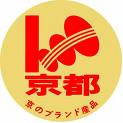
There is also a special logo mark for Kyoto specialities, including vegetables.
Kyoo maaku 京マーク Kyoto Speciality Logo
:::::::::::::::::::::::::::::::::::::::::::::::::::::::::::::::::::::::::::::::::::::::::::::::::::::


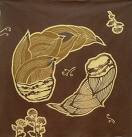
furoshiki with vegetable patterns 京野菜風呂敷
. . . CLICK here for Photos !
tamanokoshi (marry into the purple) charm 玉の輿お守り
to marry a rich husband or wife
with design of Kyoto Vegetables
talisman at Imamiya shrine 今宮神社
Einheirat in eine reiche Familie
*****************************
HAIKU
sokobie no yado no kinpira goboo kana
foot-cold -
the little inn serves
burdock roots
Tsuda Teiko 津田汀子
*****************************
Related words
kigo for mid-summer
***** yamagoboo no hana 山牛蒡の花 (やまごぼうのはな)
flower of the pokeroot, pokeweed
Phytolacca esculenta

山牛蒡に石ころ寄せぬあらきはり
yamagoboo ni ishikoro yosenu arakihari
Takada Chooi 高田蝶衣 Takada Choi
:::::::::::::::::::::::::::::::::::::::::::::::::::::::::::::::::::::::::::::::::::::::::::::::::::::
WASHOKU
Togarashi, toogarashi 唐辛子 red hot pepper
***** WASHOKU : INGREDIENTS
gobo
[ . BACK to WORLDKIGO TOP . ]
:::::::::::::::::::::::::::::::::::::::::::::::::::::::::::::::::::::::::::::::::::::::::::::::::::::


